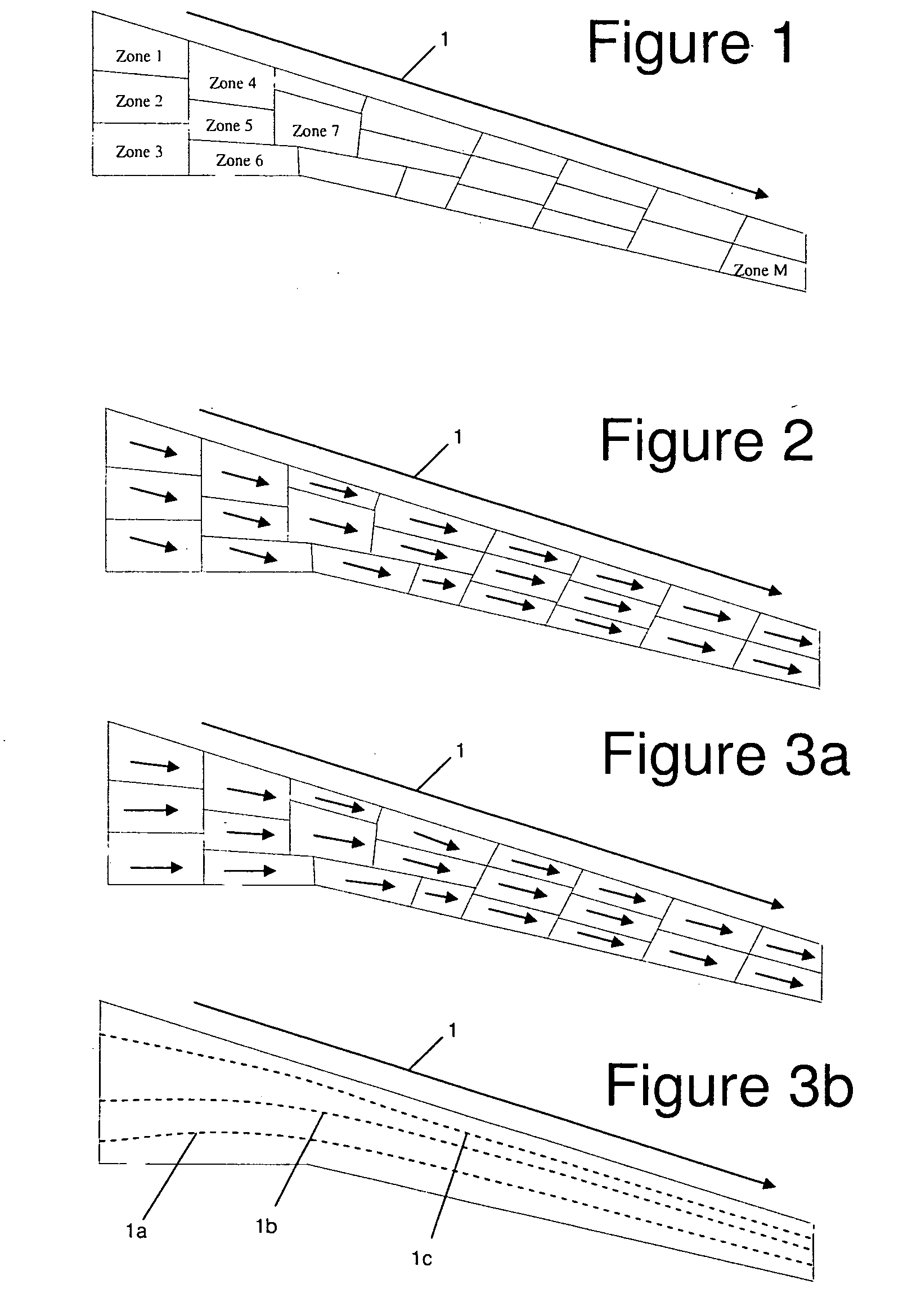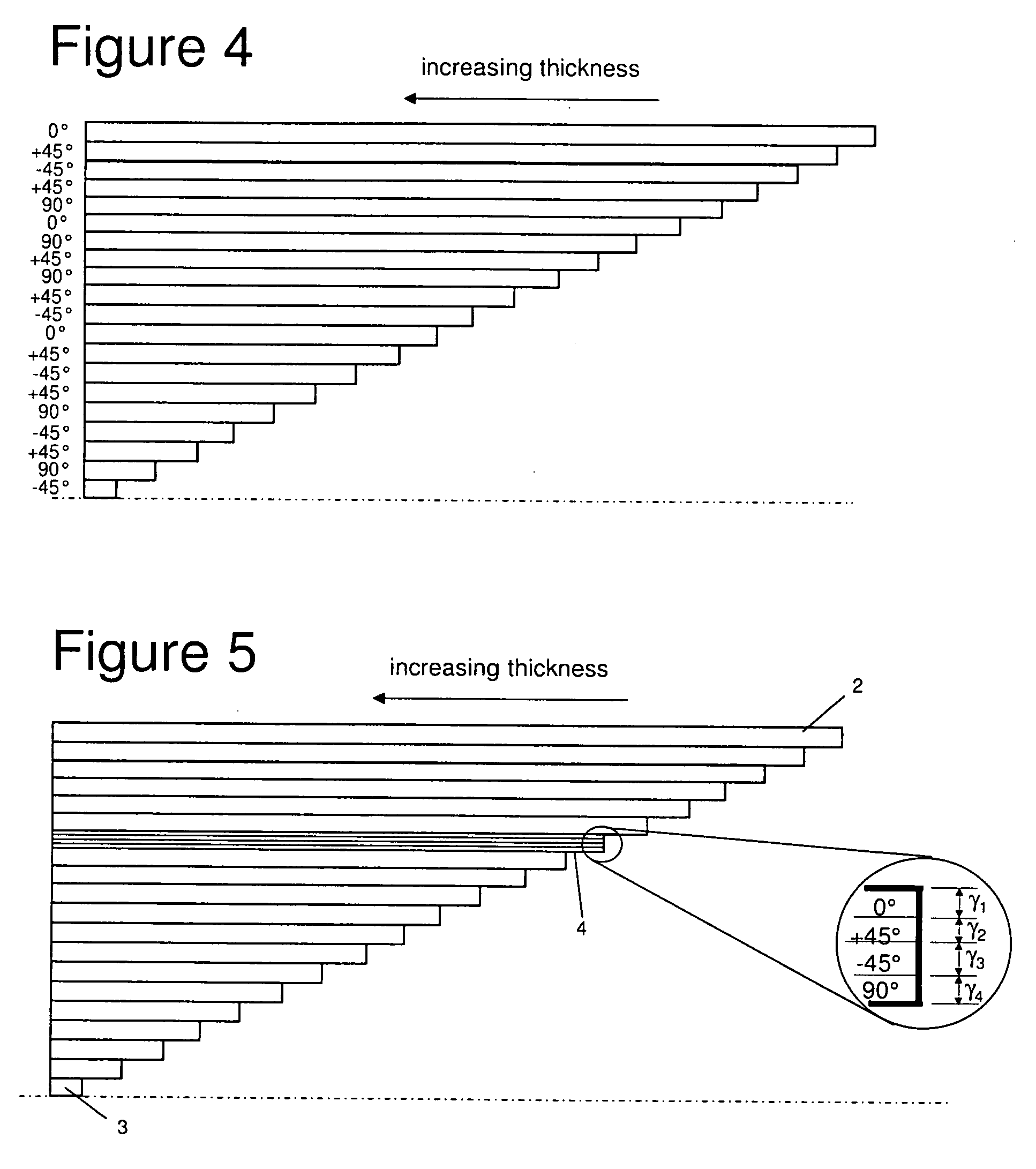Method of designing a composite laminate
a composite laminate and design technology, applied in the field of composite laminate design, can solve the problems of significant changes in bending stiffness driven behaviours like buckling, methods that do not permit optimisation of conventional methods that do not optimise the stacking sequence of the laminate, etc., to achieve sufficient buckling capability and sufficient strength
- Summary
- Abstract
- Description
- Claims
- Application Information
AI Technical Summary
Benefits of technology
Problems solved by technology
Method used
Image
Examples
Embodiment Construction
)
[0028]We describe below a method of designing a composite laminate. The method uses an optimisation design description that allows simultaneous design of a laminate's thickness, constitution, ply orientations and stacking sequence in a single continuous process of optimisation. The optimisation design description introduces a number of global and local design variables in order to achieve a laminate description that utilises the laminate's design freedom whilst ensuring ply continuity across the structure, keeping the optimisation problem size and computational efforts at a manageable size. It is noted that the term “laminate constitution” is used herein to describe the percentages of the various ply orientations. For instance a laminate may be said to have a constitution of 30% 0° plies, 30%+ / −45° plies, and 30% 90° plies. When designing a laminate both the laminate's in-plane properties (for instance in-plane stiffness) and out-of-plane properties (for instance bending and torsio...
PUM
 Login to View More
Login to View More Abstract
Description
Claims
Application Information
 Login to View More
Login to View More - R&D
- Intellectual Property
- Life Sciences
- Materials
- Tech Scout
- Unparalleled Data Quality
- Higher Quality Content
- 60% Fewer Hallucinations
Browse by: Latest US Patents, China's latest patents, Technical Efficacy Thesaurus, Application Domain, Technology Topic, Popular Technical Reports.
© 2025 PatSnap. All rights reserved.Legal|Privacy policy|Modern Slavery Act Transparency Statement|Sitemap|About US| Contact US: help@patsnap.com



